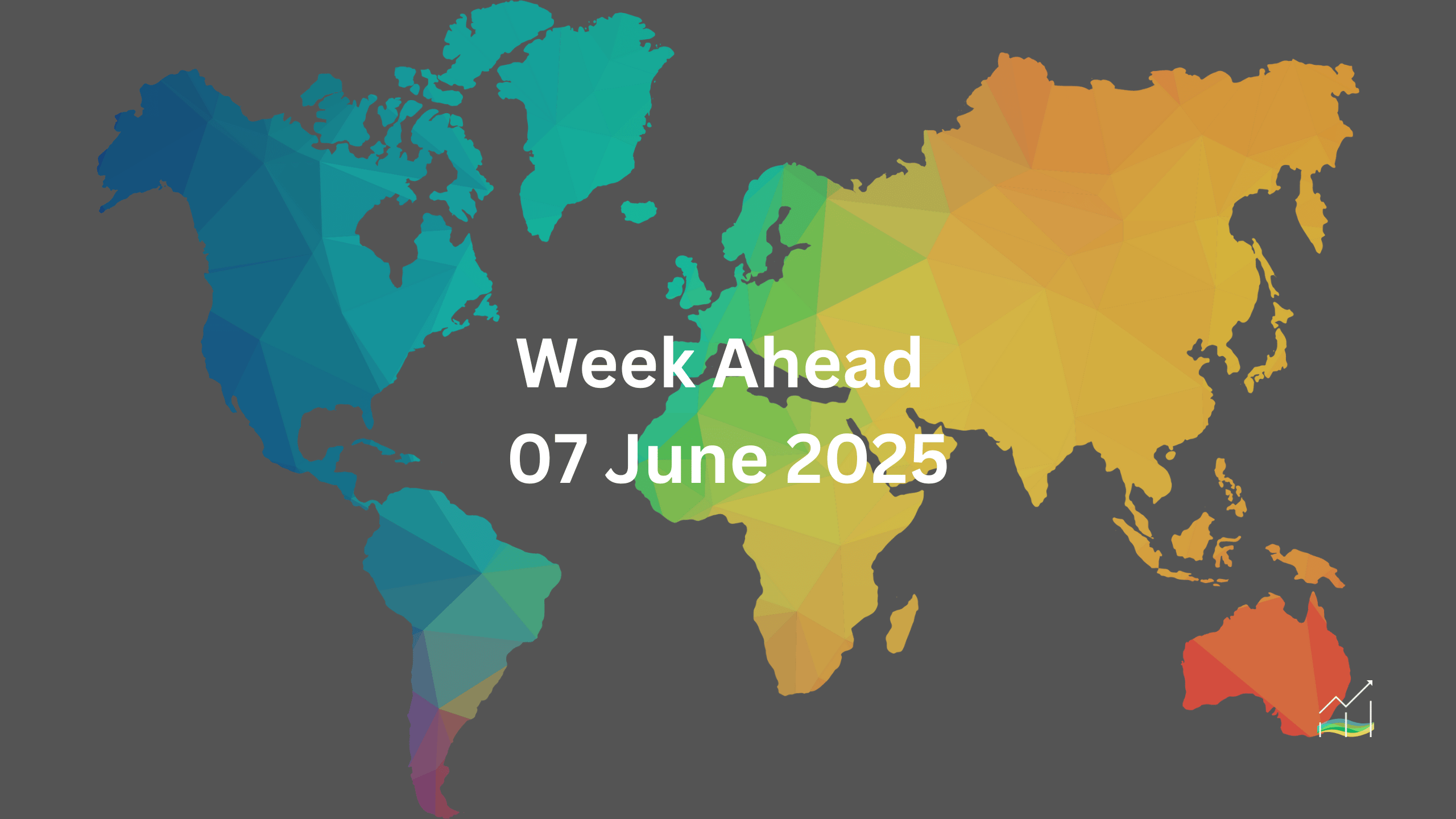07/06/2025 Week Ahead

Dollar Weakness Meets Resistance as Inflation & Geopolitical Risks Loom
Key Takeaways:
- The US dollar weakened significantly last week, hitting new yearly lows against several G10 currencies.
- Despite the drop, the dollar may stabilise near-term due to firm US economic data and a steady unemployment rate.
- Markets await May US CPI, with expectations for modest year-on-year gains.
- Key global data includes UK jobs and GDP, China’s inflation and industrial output.
- Rising US-China trade tensions and ongoing geopolitical risks in Ukraine continue to affect sentiment.
- US 10-year bonds are outperforming other G7 counterparts, while US equities show modest gains.
The US dollar’s slide deepened last week, reaching new lows for the year against several major currencies, including sterling, the Canadian dollar, and the Antipodeans. While this move appears aligned with a broader downtrend, the recent momentum may pause. With stronger-than-expected US jobs data and a steady unemployment rate of 4.2% over the past three months, the Federal Reserve is under no immediate pressure to shift its current policy stance. This allows the existing restrictive setting to continue working against inflation without prompting new measures.
Attention now turns to the upcoming May Consumer Price Index report, expected to show slight gains in both the headline and core inflation readings. Persistent cost pressures remain a concern, especially as business surveys indicate that companies still plan to pass on higher import costs, driven in part by tariffs. At the same time, US-China trade negotiations are set to resume in London, although tensions remain elevated.
Beyond the US, key figures from China and the UK are also in focus. China's May inflation data and industrial output will provide clues about domestic recovery momentum. The UK will release both its employment report and GDP for April, which are likely to influence the Bank of England's outlook. Geopolitically, Ukraine’s continued drone strikes against Russian targets have increased the risk of a serious retaliatory response, casting a shadow over European markets.
Despite fiscal concerns and questions around US exceptionalism, US 10-year bonds have emerged as the strongest performers among G7 debt markets so far this year. Equities are mixed, with the S&P 500 showing a modest gain while underperforming European indices. In contrast, Japan’s Nikkei and China’s CSI are both recording small losses for the year.
United States of America
Overview
Market uncertainty remains elevated as the impact of the Trump-era tariff strategy continues to ripple through economic sentiment. Although a recent judicial challenge has temporarily blocked parts of that policy, the broader issue persists. With Congress still hesitant to reassert its authority over trade policy, businesses and investors are left navigating unclear regulatory waters. This backdrop complicates the outlook for inflation and interest rates just as the Federal Reserve prepares for a pivotal data week.
Recent figures suggest the economy is responding unevenly. Auto sales and job growth both slowed in May, reflecting a possible cooling in consumer momentum. However, the Fed has signalled it will not act based solely on sentiment surveys. Instead, officials are looking closely at inflation data. The upcoming release of the May Consumer Price Index will be a key moment. Expectations are for a monthly rise of 0.2%. Because of the flat reading in May 2024, the year-over-year rate may rise to 2.5%, which would be the first annual increase since January. The core CPI may post a 0.3% monthly increase, potentially lifting the yearly rate to as high as 3.0%.
Attention will also turn to wholesale prices and Treasury auctions. The Producer Price Index is unlikely to repeat last month’s sharp decline, but it remains a critical indicator. Meanwhile, the Treasury plans to issue $119 billion in coupon-bearing bonds. This comes on the heels of weak demand in recent auctions, which contributed to rising yields late last week. Geopolitical risk is also in play, with markets closely watching Russia’s response to recent Ukrainian drone attacks, which could inject further volatility into global risk sentiment and US bond markets.
Economic Drivers
- Lingering uncertainty from unresolved tariff policies adds to regulatory risk.
- Congress remains inactive in reclaiming its trade policy role from the executive.
- Fed prioritises actual economic data over sentiment surveys for policy decisions.
- Rising inflation expectations amid base effects and persistent core pressures.
- Geopolitical risks from Russia-Ukraine conflict could impact global flows and investor risk appetite.
Data and Events
- 11 June 2025: President Trump Speaks.
- 11 June 2025: CPI.
- 12 June 2025: 10-y Bond Auction.
- 12 June 2025: PPI.
- 12 June 2025: Unemployment Claims.
- 13 June 2025: 30-y Bond Auction.
- 13 June 2025: Prelim UoM Consumer Sentiment.
- 13 June 2025: Prelim UoM Inflation Expectations.
Price Action
- Dollar Index may have found short-term support near 98.35.
- Resistance seen in the 99.65 to 100.00 range, with potential for further gains if breached.
- Escalating geopolitical tensions could trigger a short-covering rally in the dollar.
- Break above 100.50 may open the path to 102.00.
Key Points:
- Uncertainty over trade policy and judicial pushback clouds the outlook.
- May CPI likely to rise, with potential uptick in both headline and core inflation.
- Treasury auctions and weak prior demand may drive yields higher.
- Geopolitical risks may fuel dollar volatility and safe-haven flows.
Australia
Overview
The Australian dollar remains heavily influenced by broader shifts in global markets, particularly through its correlations with the US Dollar Index, the Canadian dollar, and gold. These intermarket relationships shape trading dynamics even in the absence of major domestic developments. Over a 30-day period, the Australian dollar shows a strong negative correlation with the US Dollar Index, while maintaining close alignment with the Canadian dollar and moderate correlation with gold. These patterns, while fluctuating over time, reflect how external forces continue to drive currency performance.
Domestically, this week is relatively quiet on the data front. Confidence surveys from both consumers and businesses headline the calendar, but no major economic releases are scheduled. Markets, however, are increasingly pricing in a rate cut at the Reserve Bank of Australia’s next meeting. Current overnight cash rates sit at 3.85%, yet futures markets are now reflecting close to an 80% chance of a reduction next month, a notable increase from the two-thirds probability seen recently. Traders also anticipate the policy rate to fall to around 3.09% by year-end, suggesting a dovish outlook is firming.
Economic Drivers
- Strong short-term correlation between AUD and USD Index, CAD, and gold highlights external market influence.
- Shifting rate expectations as traders increasingly bet on RBA rate cuts.
- Confidence indicators expected to shape near-term sentiment in absence of hard economic data.
- No material changes in inflation or employment expected this week.
Data and Events
- 10 June 2025: Westpac Consumer Sentiment.
- 10 June 2025: NAB Business Confidence.
- 12 June 2025: Inflation Expectations.
Price Action
- AUD/USD briefly touched a new yearly high near $0.6540 on 5 June.
- The pair settled above $0.6500 but lost momentum before the weekend, closing slightly below that level.
- A drop below $0.6480 could trigger a move toward the $0.6445 to $0.6450 zone.
- Stronger support lies around $0.6400, which has held since 12 May.
Key Points:
- Strong AUD correlations with external markets drive direction in a data-light week.
- Confidence surveys are the main domestic indicators to watch.
- Market pricing now implies a high probability of an RBA rate cut in July.
- Price action shows fading momentum above $0.6500, with downside levels in focus.
Canada
Overview
The Canadian dollar remains heavily influenced by the broader movement of the US dollar, showing stronger correlation with the Dollar Index than with traditional domestic drivers such as interest rates, equity markets, or commodity prices. Over both 30- and 60-day periods, the Canadian dollar has tracked closely with the US dollar’s movements, while also maintaining moderate correlations with gold. This dynamic reflects a market environment where external currency flows and global risk sentiment continue to dominate direction.
Following last week’s labour market data and the Bank of Canada policy decision, the economic calendar has slowed. Upcoming data includes building permits, manufacturing sales, and capacity utilisation for the first quarter. While the data may offer some insight into domestic demand, it is unlikely to shift market expectations meaningfully. The swaps market has pulled back on its expectations for a rate cut in July, with odds falling from nearly 65% to around 30%. Forecasts for the year-end policy rate have climbed as well, now sitting near 2.50%, compared to 2.20% in late April.
Economic Drivers
- Canadian dollar remains closely tied to the US dollar rather than oil prices or domestic interest rates.
- Moderate secondary correlation with gold reinforces sensitivity to broader market sentiment.
- Diminished expectations for a July rate cut reflect stronger-than-expected recent economic data.
- Year-end rate projections are gradually increasing, indicating a more hawkish policy trajectory.
Data and Events
- 11 June 2025: Building Permits.
- 13 June 2025: Capacity Utilization Rate.
- 13 June 2025: Manufacturing & Wholesale Sales.
Price Action
- USD/CAD touched a seven-month low last week around 1.3635.
- The pair has shown limited upside over the past 14 weeks, with gains in only four of them.
- Initial resistance expected around the 1.3725 to 1.3750 zone.
- Break above that area may open the door to 1.3800 to 1.3830.
Key Points:
- Canadian dollar direction remains highly dependent on US dollar movement.
- Market has scaled back expectations for near-term Bank of Canada easing.
- Light data calendar keeps focus on external influences and cross-asset correlations.
- Technical picture shows tentative recovery in USD/CAD after extended decline.
China
Overview
China continues to face a challenging economic landscape, marked by subdued domestic performance and constrained international positioning. While Beijing attempts to expand its global influence amid reduced US engagement in institutions like the World Health Organization, internal policy limitations have hindered its ability to capitalise on that shift. The renminbi remains tightly managed, maintaining stability against the US dollar. At the same time, Chinese sovereign yields have barely moved this year, in contrast to falling yields in the US, and domestic equities remain under pressure. The CSI 300 index has posted a mild decline of around 1.5% year-to-date, reflecting persistent investor caution.
Domestically, deflation remains a concern. The structure of China’s consumer price index, which places heavy weight on food, contributes to this, alongside intense price competition among firms. For example, the recent price cuts by automaker BYD reflect broader market dynamics. Although consumption has grown steadily since the global financial crisis, the focus remains on managing the effects of overinvestment and uneven growth. Lending activity is expected to have remained robust in May, supported by new quotas for banks and local governments. However, trade figures for the month may show distortions due to an unofficial embargo that lasted until a new US trade arrangement was reached on 11 May. Some retailers reportedly rushed shipments ahead of the deal, but shipping volumes declined again by month-end.
Economic Drivers
- Beijing’s attempt to fill global leadership gaps is limited by domestic policy restrictions.
- The renminbi remains closely managed to maintain stability against the US dollar.
- China’s bond market remains flat, with limited yield movement year-to-date.
- Deflationary pressure persists, especially due to food prices and aggressive competition.
- Lending remains strong, driven by government-imposed quotas.
- Trade activity was temporarily boosted by early US orders, but slowed after mid-May.
Data and Events
- 09 June 2025: CPI.
- 09 June 2025: PPI.
- 09 June 2025: Trade Balance.
- 09 June 2025: New Loans.
Price Action
- The US dollar held above the CNH7.1615 level, the year's low set in late May, and rebounded after the US jobs data.
- Immediate resistance is seen near CNH7.20, with the upper range extending to CNH7.2240 to CNH7.2260.
- Against the onshore yuan, the CNY7.20 area may be tested. This is also where the 20-day moving average lies, which has not been breached in over a month.
Key Points:
- China’s currency and bond markets remain stable, while equities underperform.
- Structural deflationary factors continue to weigh on the consumer sector.
- Lending is supported by policy directives, but trade data may be skewed by earlier disruptions.
- Dollar-yuan dynamics suggest near-term range-bound behaviour with upside risk.
Europe
Overview
The European Central Bank has implemented a substantial 200 basis point rate cut cycle since June 2024, and is now expected to pause, giving the existing easing time to filter through the economy. This wait-and-see approach reflects cautious optimism, with internal eurozone tensions currently subdued. However, external relations remain strained, particularly with the United States. A new proposal by Germany to introduce a 10% digital tax risks exacerbating tensions with Washington, making transatlantic policy coordination more difficult.
Geopolitical risks also remain prominent. Russia's ongoing retaliation against Ukraine continues to weigh on European market sentiment, particularly given the region’s energy dependence and economic proximity. Meanwhile, the euro is navigating mixed macroeconomic signals. March saw strong industrial activity and trade performance, but April data revealed a significant slowdown, suggesting earlier gains may have been frontloaded in anticipation of US tariffs. For example, Germany's industrial production fell sharply in April, accompanied by a drop in exports, reversing part of March’s strength.
Economic Drivers
- ECB expected to pause further rate cuts to assess lagging effects of previous policy easing.
- Germany's proposal for a 10% digital tax could reignite trade frictions with the US.
- Relative calm within the eurozone, but external geopolitical tensions remain elevated.
- Russian military action against Ukraine continues to create downside risk for the euro.
- Soft April industrial and trade figures suggest earlier strength may have been temporary.
Data and Events
- 11 June 2025: German 10-y Bond Auction.
- 13 June 2025: German & French Final CPI.
- 13 June 2025: Eurozone Industrial Production.
- 13 June 2025: Eurozone Trade Balance.
Price Action
- Euro dropped to near $1.1370 following strong US employment data but rebounded to $1.1415.
- Previous high near $1.1500 may serve as a short-term top.
- Downside risk toward the $1.1260 to $1.1320 support area remains in focus.
Key Points:
- ECB pause signals a shift to monitoring policy impact rather than adding more stimulus.
- Digital tax proposal could worsen EU-US tensions at a sensitive time.
- Weak April industrial and trade data contrast with March’s temporary strength.
- The euro faces both geopolitical and macroeconomic headwinds in the near term.
Japan
Overview
The Japanese yen remains highly sensitive to the broader trajectory of the US dollar rather than domestic or international interest rate dynamics. Recent data show that the yen’s exchange rate is most strongly correlated with movements in the Dollar Index, maintaining a correlation above 0.90 over the past 30 sessions. In contrast, its correlation with US 10-year Treasury yields is notably weaker, and the link with Japanese bond yields or yield spreads is even less significant. This reflects a currency environment still dominated by external forces, particularly dollar trends, rather than domestic fundamentals.
The upcoming week features a relatively packed economic calendar, but much of the data is backward-looking or unlikely to affect market sentiment. Revised GDP figures for Q1 and industrial output from April are among the main releases. Other scheduled items include the April current account, tertiary industry activity, and some business sentiment surveys, none of which are typically market-moving. The swaps market is currently pricing in only about 16 basis points of additional policy tightening by year-end. Meanwhile, there is cautious optimism in Tokyo that a US-Japan agreement may be reached before the G7 summit in mid-June, which could offer a short-term political lift.
Economic Drivers
- Yen remains primarily driven by US dollar movements, not domestic rates or spreads.
- High correlation with Dollar Index signals ongoing external dependence.
- Domestic bond yields have little influence on exchange rate direction.
- Market pricing shows minimal expectation for further Bank of Japan tightening this year.
- Hopes for a US-Japan agreement ahead of the G7 summit may influence sentiment.
Data and Events
- 09 June 2025: Current Account.
- 09 June 2025: Final GDP.
- 09 June 2025: Economy Watchers Sentiment.
- 10 June 2025: Prelim Machine Tool Orders.
- 11 June 2025: PPI.
- 12 June 2025: BSI Manufacturing Index.
- 13 June 2025: Revised Industrial Production.
- 13 June 2025: Tertiary Industry Activity.
Price Action
- Dollar-yen exchange rate closely tracks broad dollar strength.
- Dollar remains firm near CNH7.1900 after rebounding from late May lows near CNH7.1615.
- Resistance is seen around CNH7.2250 in the offshore market.
- Against the onshore yuan, the US dollar may test the CNY7.20 level, near the 20-day moving average.
Key Points:
- Yen strength or weakness is largely a reflection of dollar moves, not Japanese policy.
- Economic data this week is unlikely to shift market expectations.
- Market pricing indicates very limited tightening from the BOJ in 2025.
- Potential US-Japan trade agreement could influence yen sentiment around the G7 summit.
United Kingdom
Overview
Sterling has gained support from two key factors. Firstly, markets have scaled back their expectations for aggressive Bank of England policy easing. Over the past month, implied year-end rates in the swaps market have risen by more than 30 basis points, suggesting more resilience in the BoE’s policy outlook. Secondly, the pound continues to benefit from broad-based US dollar weakness. The inverse correlation between sterling and the Dollar Index is notably strong, although it is difficult to isolate this from the euro’s influence, given its heavy weight in the index.
The economic calendar this week features the UK labour market report and April GDP. The UK led the G7 with 0.7% GDP growth in Q1, but this pace is unlikely to be sustained. Forward-looking indicators suggest the economy will slow markedly over the coming quarters. Still, these data releases are unlikely to shift expectations ahead of next week’s Bank of England policy meeting, where markets currently assign a very low probability of any rate change.
Economic Drivers
- Reduced market expectations for BoE rate cuts are lifting sterling.
- Swaps market has priced in over 30 basis points more in year-end rates compared to a month ago.
- Broad weakness in the US dollar supports GBP, especially given its strong inverse correlation with the Dollar Index.
- UK economic growth outpaced G7 peers in Q1 but is forecasted to decelerate going forward.
Data and Events
- 10 June 2025: Average Earnings Index.
- 10 June 2025: Claimant Count Change.
- 10 June 2025: Unemployment Rate.
- 11 June 2025: 10-y Bond Auction.
- 12 June 2025: GDP.
- 13 June 2025: Consumer Inflation Expectations.
Price Action
- Sterling reached a three-year high near $1.3615 last week before retreating.
- Declined to $1.3500 following the US employment data.
- Closed below the five-day moving average (~$1.3545) ahead of the weekend for the first time last week.
- Immediate support is around $1.3490, followed by $1.3435 at the 20-day moving average.
- The 20-day moving average has held since 16 May.
Key Points:
- Sterling supported by reduced expectations for BoE rate cuts and a weaker US dollar.
- Labour data and April GDP unlikely to change BoE’s near-term policy stance.
- Price momentum has slowed, with attention shifting to near-term support levels.
© 2025 SKONE Enterprise (003319453-V). All rights reserved.
The content on this site is for informational purposes only and does not constitute financial advice.


